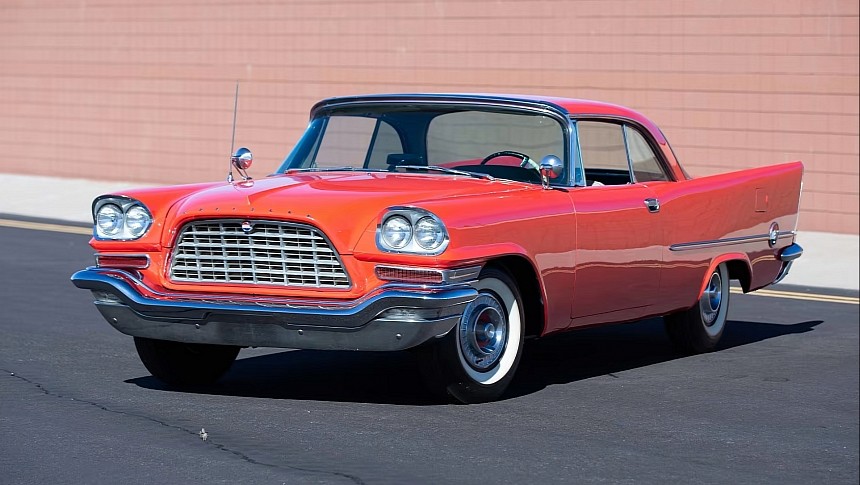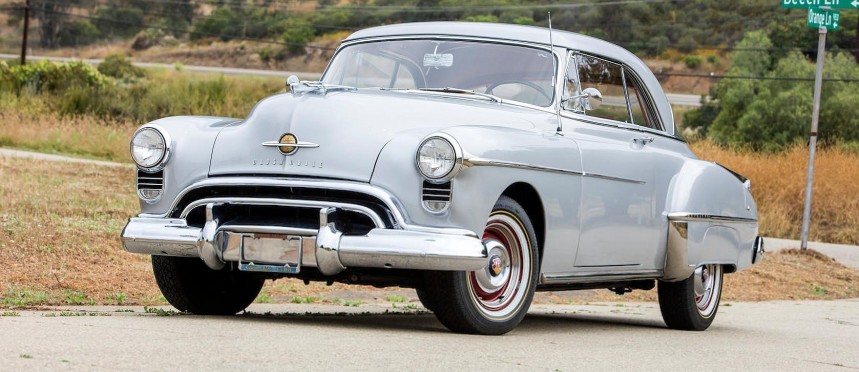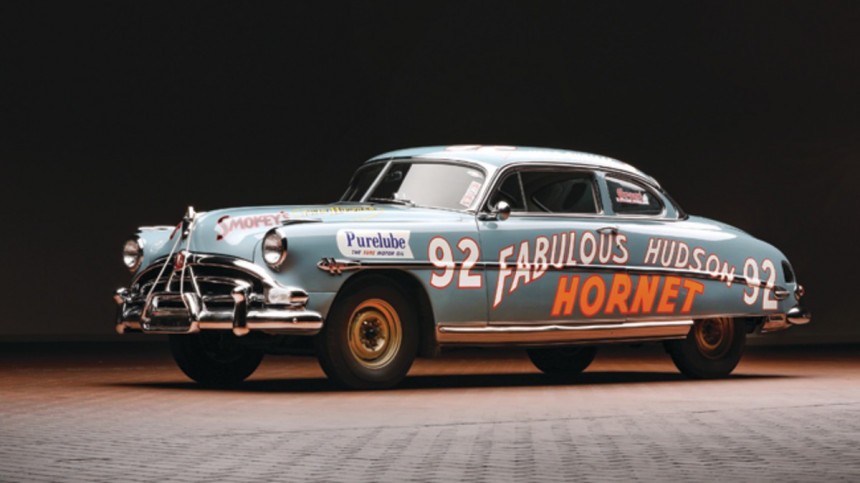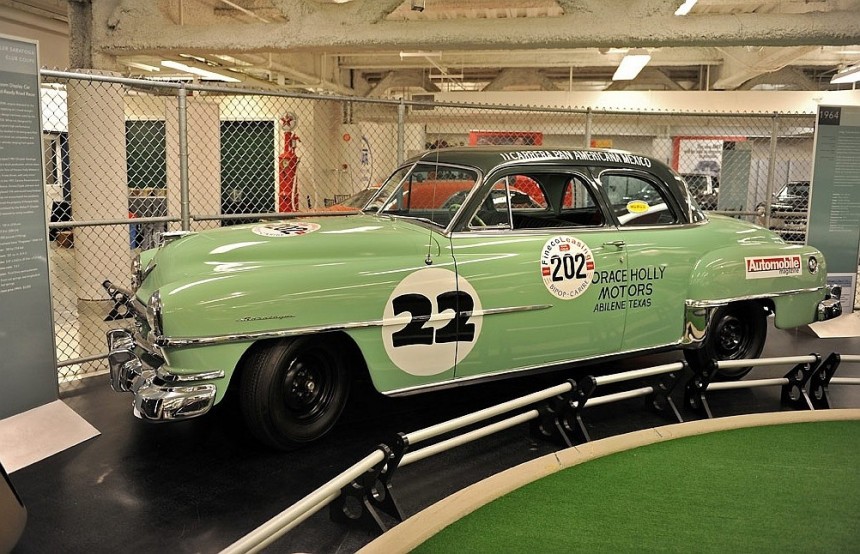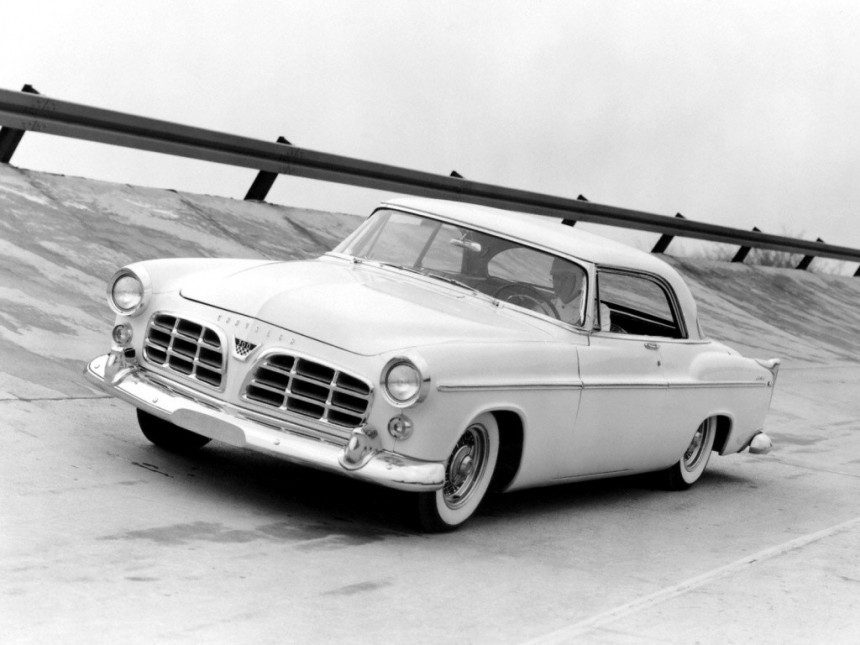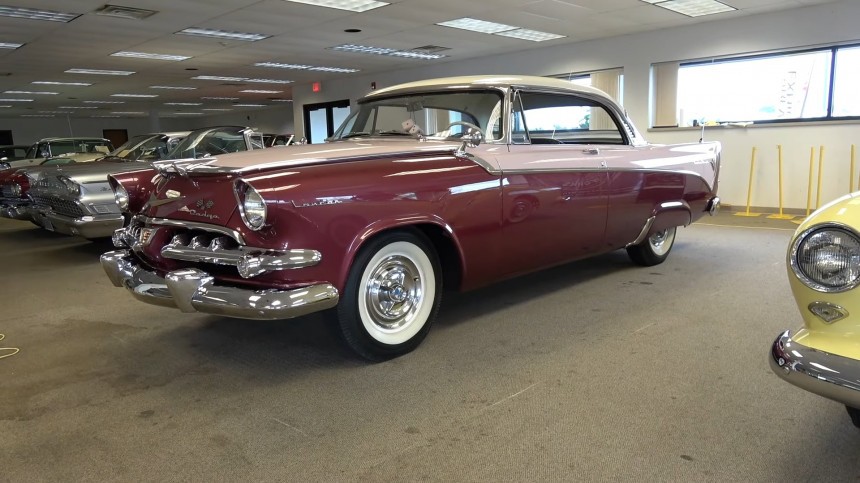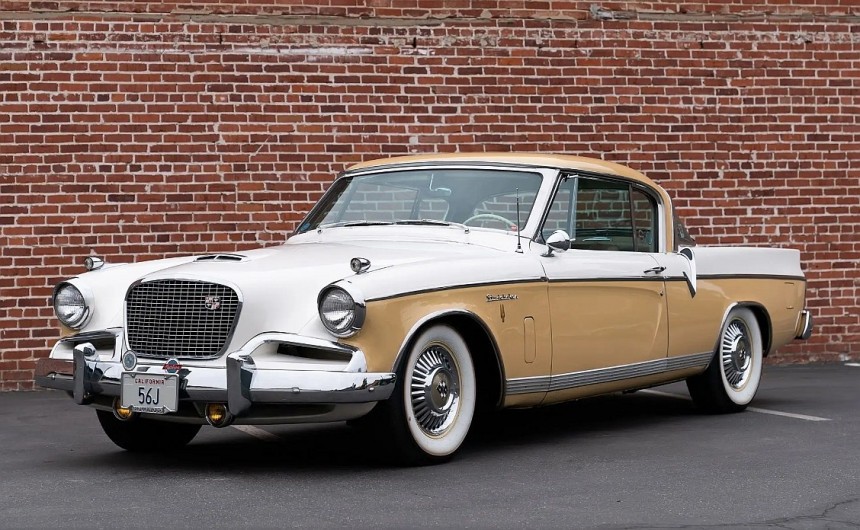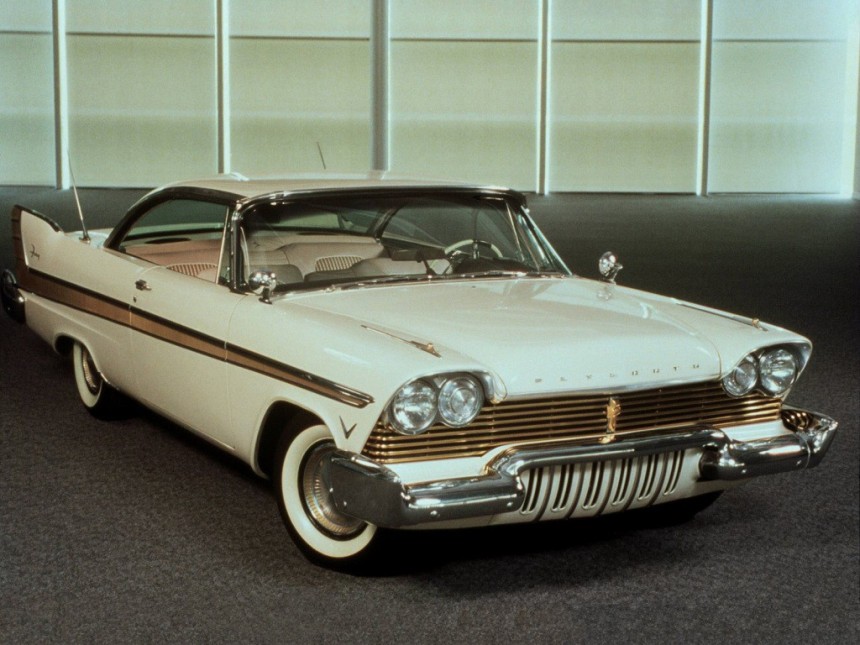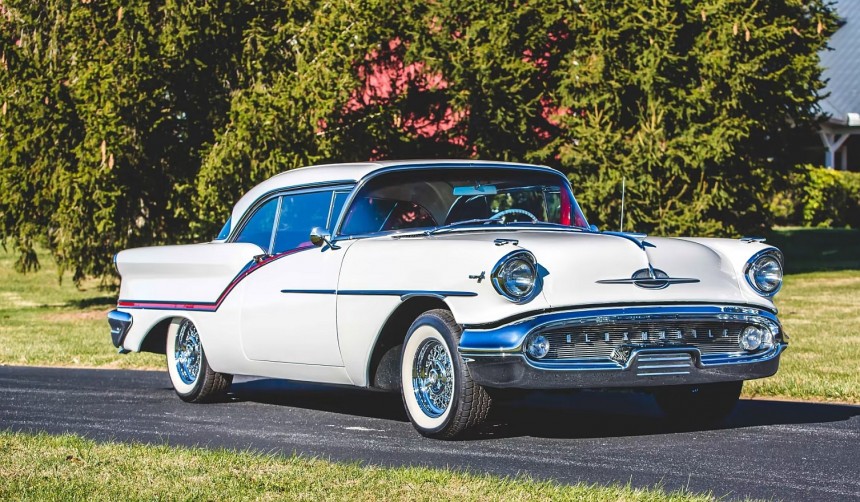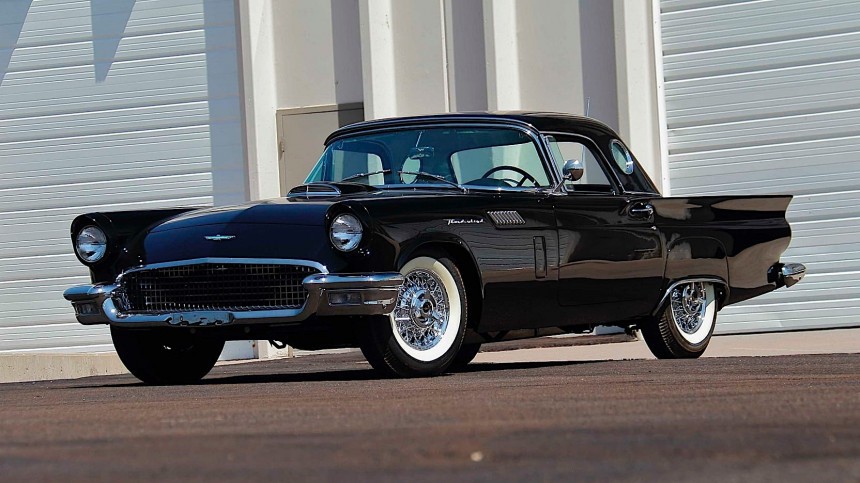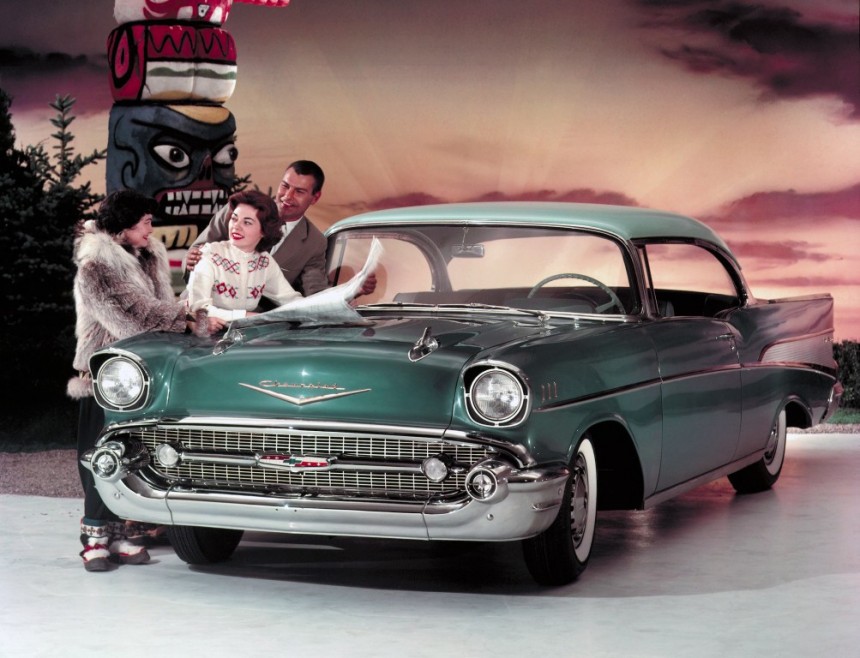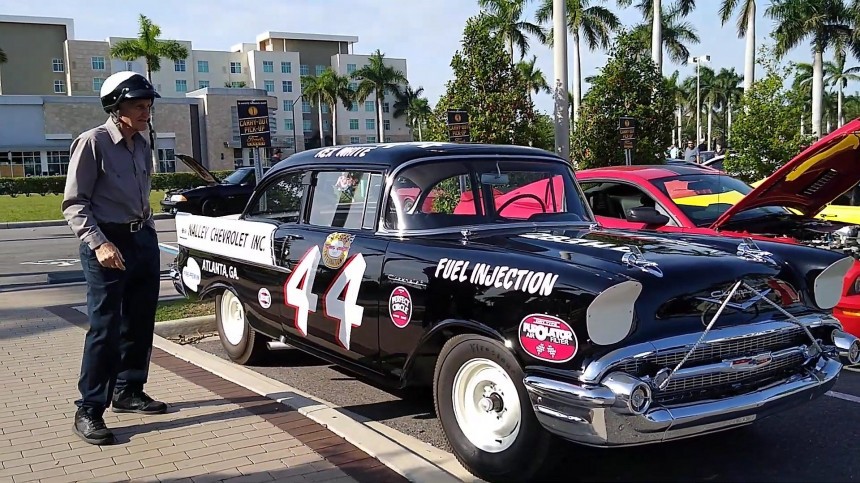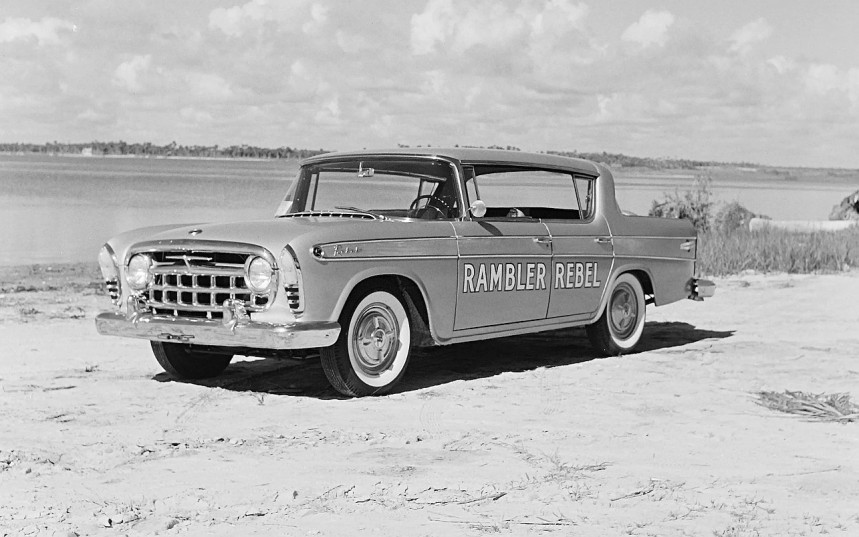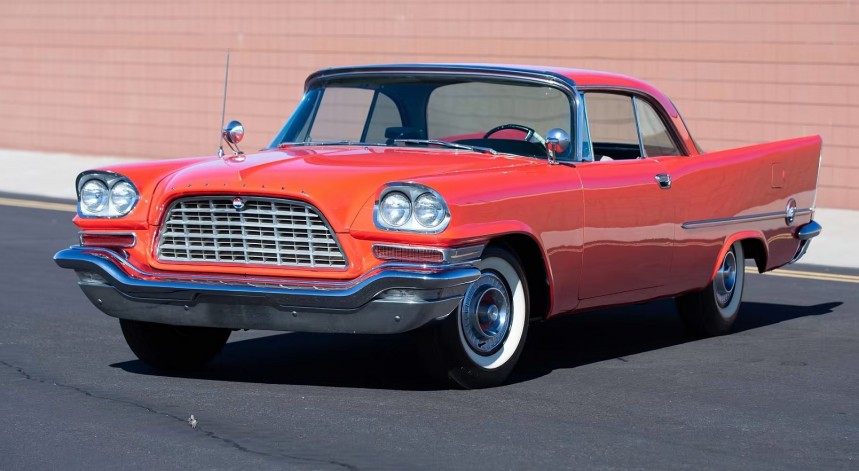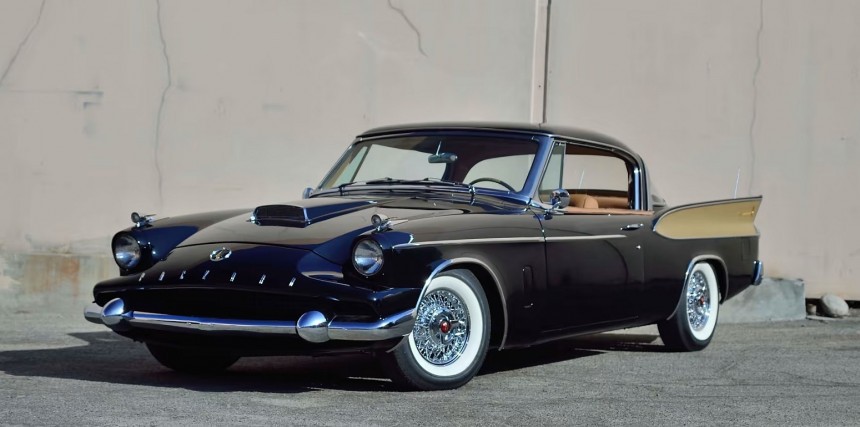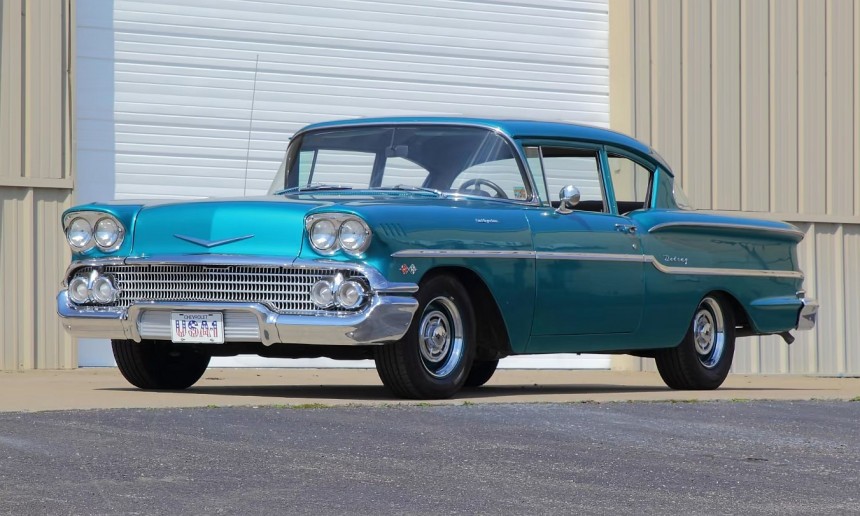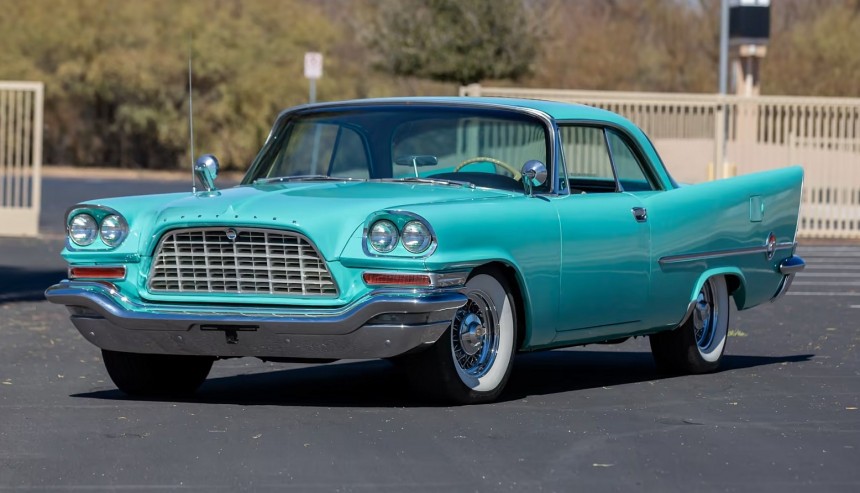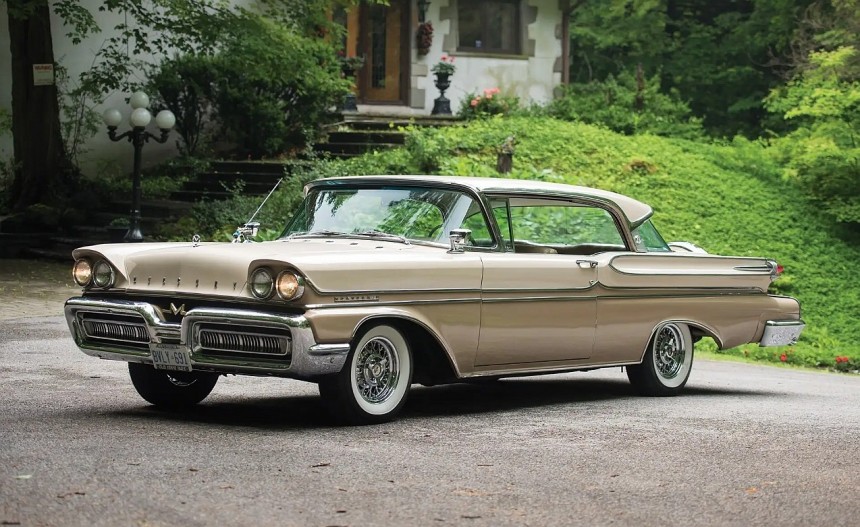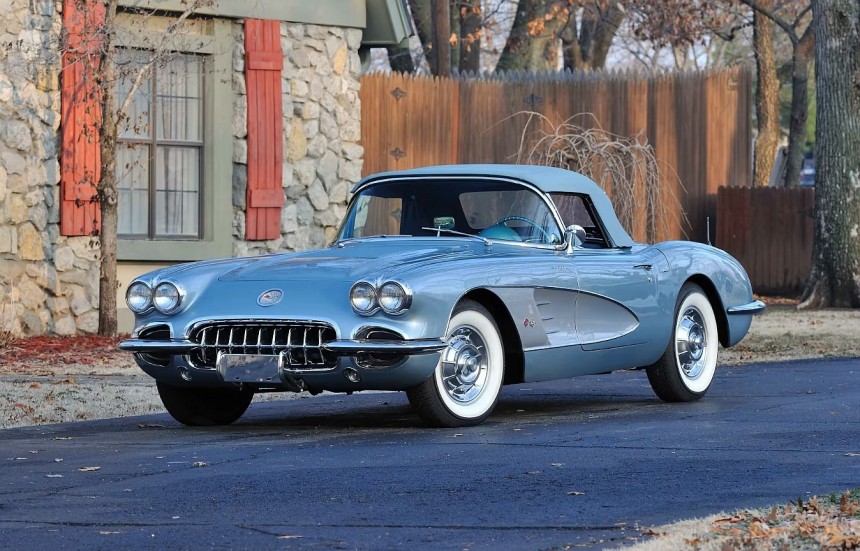The Merriam-Webster dictionary defines a muscle car as "any of a group of American-made two-door sports coupes with powerful engines designed for high-performance driving." Other definitions claim that only midsize vehicles can be muscle cars. At the same time, some descriptions are more permissive and include the smaller pony cars. All told the definition of the muscle car is still subjective and highly debated.
And so is the answer to the question, "What was the first muscle car?" The consensus is that the muscle car era began in 1963 when Pontiac introduced the GTO. But that's not because the GTO was necessarily the most powerful vehicle of its time. It's simply because Pontiac's advertising campaign for the coupe was centered around performance numbers like quarter-mile times, top speed, and acceleration.
But while it's the nameplate that popularized the high-performance midsize segment, the Pontiac GTO wasn't America's first muscle car. The concept can be traced back to the late 1940s. Moreover, the 1950s were packed with high-performance rigs because that's when the Detroit "horsepower wars" actually began.
Introduced in 1949, the Oldsmobile 88 was the first to apply "the big V8 in a smaller car" ethos. Developed to fill the gap between the 76 and the 98, the 88 featured GM's then-new B-body platform and came in at 202 inches (5,131 mm) long. While similar in size to the 76, it ditched the latter's straight-six engine for the 303-cubic-inch (5.0-liter) V8 usually found in the bigger 98.
Dubbed "Rocket," the mill was one of the first post-WW2 OHV V8s produced by General Motors and produced 135 horsepower and 253 pound-feet (343 Nm) of torque. That's far from impressive by modern standards, but the "Rocket" delivered an extra 35 horses compared to the period Ford "flathead" V8. In 1952, Oldsmobile introduced a four-barrel version rated at 160 horsepower.
The powerplant turned the 88 into the car to beat on the NASCAR oval tracks. Red Byron won the inaugural season of the Strictly Stock division in 1949, while Bill Rexford gave Oldsmobile its second back-to-back championship in 1950. Having won more than half of the races it entered from 1949 to 1951, the Olds 88 became the first "King of NASCAR." The car's success in NASCAR translated into big sales at the dealership, so the 88 was also one of the first production cars to employ the "win on Sunday, sell on Monday" strategy.
Launched in 1950, the Hudson Hornet is the car that eclipsed the Olds 88 in NASCAR. Sporting the innovative "step-down" chassis design, the Hornet had a lower center of gravity, a sleeker body, and better handling. The Hornet hit the NASCAR tracks in 1951 and won three consecutive championships with Herb Thomas and Tim Flock behind the steering wheel. The car also dominated the AAA series, winning 40 races from 48 events.
But here's the unexpected part of the story: the "Fabulous" Hornet obtained all these achievements with an inline-six engine. I agree that it's a notable departure from the "must have a V8" rule, but Hudson's oversized, flathead six-cylinder was slightly more potent than Oldsmobile's "Rocket" V8 in the early days when it was rated at 145 horsepower. A 1954 upgrade increased oomph to 170 horsepower, again a bit higher than the Olds 88. The Hornet is fabulous enough to deserve a place among V8-powered muscle cars.
Chrysler offered the Saratoga in three different stints. It was introduced in 1939 and discontinued in 1942 due to WW2, it returned from 1946 to 1948. Chrysler then revived the nameplate again from 1957 to 1965. It's one of the lesser-known Chryslers, but it played a vital role in the early "horsepower wars."
Redesigned in 1949, the Saratoga shared a straight-eight engine with the New Yorker and Imperial. However, the 1951 facelift saw the car move on the shorter wheelbase of the Windsor, a six-cylinder Mopar. In a strategy similar to Oldsmobile's, Chrysler dropped a big V8 in the downsized full-size. The mill in question was the iconic 331-cubic-inch (5.4-liter) HEMI V8. Offered in the range-topping New Yorker, it came with 180 horsepower on tap.
When fitted in the lighter two-door Club Coupe model, the HEMI turned the Saratoga into a surprisingly fast rig. The car was entered in the grueling La Carrera Panamericana race, finishing third behind a pair of Ferraris in 1951. The Mopar achieved average speeds of almost 110 mph (177 kph).
Chrysler took the performance market more seriously in the mid-1950s when it created the C-300. The first in a long line of 300 "letter series" cars, the C-300 hit the market for the 1955 model year with a heavily modified 331 HEMI V8. Rated at 300 horsepower, it was the most potent lump available at the time and pushed the Chrysler from 0 to 60 mph (97 kph) in 9.8 seconds and toward a top speed of 130 mph (209 kph).
Advertised as "America's most powerful car," the C-300 was, in fact, a homologation special for NASCAR duty. And it gave Chrysler its second consecutive championship in 1955. While it didn't sell well due to its high sticker, the C-300 is proof that Pontiac wasn't the first company to advertise a production car by performance numbers. Chrysler did it almost a decade earlier.
Much like the Saratoga, the Dodge D-500 is a Mopar very few people remember. And that's not surprising, given that the D-500 was built for only a short time. Based on the Coronet Custom Royal, it was Dodge's first swing at a NASCAR-spec special.
A regular Coronet on the outside, the D-500 got a heavy-duty suspension and other upgrades from range-topping Chrysler models like the New Yorker and Imperial. More importantly, the two-door hardtop also got a beefed-up version of the 315-cubic-inch (5.2-liter) "Super Red Ram" V8. Rated at 260 horsepower and 330 pound-feet (447 Nm) of torque, it was the most potent Chrysler mill save for the HEMI used in the 300 "letter series."
Dodge developed an even more potent version of the engine, which used two four-barrel carburetors for an extra 25 horsepower. Created for homologation purposes, the D-500 won 11 races in its first NASCAR season. It also set no fewer than 306 speed and endurance records at the Bonneville Salt Flats.
The D-500 is still shrouded in mystery when it comes to production numbers. While some claim Dodge made only about 1,100 cars, others estimate a production run of more than 5,000 examples. In addition, not all D-500 are hardtops. Apparently, Dodge also made a few convertibles and at least a station wagon with this engine.
Following the introduction of the limited-edition Speedster in 1955, Studebaker decided to dig deeper into the personal luxury car market with the Hawk series. Launched in 1956, it included seven different models. The Golden Hawk was the most powerful and luxurious iteration from 1956 to 1958.
While all the other Hawks featured inline-six or V8 engines built by Studebaker, the Golden Hawk arrived in showrooms with a 352-cubic-inch (5.8-liter) big-block sourced from the Packard (the Studebaker-Packard merger had happened in 1954). The mill was rated at 275 horsepower. Smaller than the full-size cars of the era, the Golden Hawk is regarded as one of the first true muscle cars.
The engine was discontinued in 1957, but the Golden Hawk retained its 275-horsepower rating thanks to a supercharged version of Studebaker's 289-cubic-inch (4.7-liter) V8.
Introduced in 1956 as a sub-series of the Belvedere, the Fury did not become a stand-alone nameplate until 1959. But it's these 1956-to-1958 versions that stand out. And no, not only because of their gold trim or association with Stephen King's "Christine." The Fury was also impressively powerful, second to only the Chrysler 300 "letter series" of the era.
While the Belvedere came with a six-cylinder as standard and a range of somewhat mundane V8s, the Fury was powered by a 240-horsepower 285-cubic-inch (4.7-liter) mill in base trim. In 1957, Plymouth switched to a 318-cubic-inch (5.2-liter) rated at 290 horses and took it up another notch in 1958. That's when it introduced the big-block 350-cubic-inch (5.7-liter) "Golden Commando."
Fitted with a four-barrel carburetor, this engine generated an impressive 305 horsepower. Plymouth also introduced an optional 350 with fuel injection and 315 horses, but it was almost immediately recalled and replaced with the four-barrel setup.
It was 1957, and the early Olds 88 that dominated NASCAR was long gone. The nameplate was already in its third generation and had grown larger and more luxurious. But Oldsmobile wanted to regain its former glory on the oval circuit. The 88 was already plenty powerful when equipped with the range-topping 371-cubic-inch (6.1-liter) "Rocket" V8, but the 88 needed more oomph to become competitive.
So Oldsmobile created the J-2, a beefed-up version of the engine topped by a trio of Rochester carburetors. Rated at 300 horsepower and a whopping 415-pound-feet (563 Nm) of torque, it was stuffed in an 88 driven by NASCAR ace Lee Petty. Unfortunately, Oldsmobile's dream came to an abrupt end when NASCAR outlawed multiple carburation mid-season, but the project spawned 2,000 to 2,500 road-legal models. These cars are extremely hard to find today.
Known as one of America's first personal luxury cars, the Thunderbird was actually born as a two-seater sports car aimed at the Corvette. Unlike the latter, it was available with V8 engines only. Launched with up to 198 horsepower on tap, the Thunderbird's output grew to 225 horses in 1956. It was far from impressive for the era, but Ford took it up a notch in 1957.
That's when it began offering a high-performance 312-cubic-inch (5.1-liter) Y-block with 270 horsepower and a supercharged version of the same mill good for 300 horses. Fitted with McCulloch or Paxton blowers as dealer options, the latter is quite rare, with only 194 examples made.
Introduced in 1955, the Tri-Five was a massive hit for Chevrolet, which sold about five million units over three model years. The run included various trims and body styles. The Bel Air Sport Coupe is the prettiest and the most sought-after nowadays. And like many cars from the era, it was also available with potent V8 mills.
The Bel Air wasn't particularly powerful in 1955 when the range-topping powerplant came with 183 horses on tap. The 1956 version wasn't crazy either at 225 horsepower. But with the "horsepower wars" already in full swing in 1957, Chevy dropped the fuel-injected 283-cubic-inch (4.6-liter) "Ramjet" in the full-size. Good for 283 horsepower, it turned the Sport Coupe model into a 16-second dragster.
Devoid of a radio unit, armrests, and a rear bench (this model was aimed at door-to-door delivery salespeople), it was notably lighter than anything else in the Tri-Five lineup. The "Black Widow" was put together by SEDCO for NASCAR racing and was eventually outlawed due to a ban on fuel injection.
Now I know the "Black Widow" wasn't a production model and shouldn't be on this list, but I'm including it because it inspired about 50 customers to spec out 150 Utility Sedans with the "fuelie" drivetrain. Yet another rare and forgotten 1950s muscle car.
Based on the Rambler Six that arrived a few months before, the Rebel came to be thanks to AMC president George W. Romney's desire to steer the company away from a head-to-head battle with the Big Three. AMC focused on smaller cars that eventually defined the US compact and midsize markets. Fortunately, AMC didn't want the Rambler to be just an A-to-B car and used a large-block V8 to create a performance version.
The mill in question was the company's then-new 327-cubic-inch (5.4-liter) V8. Rated at 255 horsepower, it wasn't quite as potent as the 300-horsepower mills that Ford, GM, and Chrysler already had in 1957. However, the Rebel's light unibody construction gave the Rambler a better power-to-weight ratio than anything else built in the US at the time. What's more, AMC also offered a fuel-injected mill with 288 horsepower. In this setup, the Rebel could hit 60 mph in seven seconds and cover the quarter-mile in less than 15 seconds.
Moreover, Chrysler also offered a limited-edition version with an even more powerful 392 rated at 390 horses. That's only 35 horsepower below the 426 HEMI, introduced almost ten years later! Unlike most cars on this list, the 300C was a very expensive rig. As a result, Chrysler sold only 2,402 units, and only 18 got the 390-horsepower V8. It was by far the most potent car of 1957 and the second-most powerful US production model built in the 1950s.
The two-door coupe arrived in showrooms with 275 horsepower, which wasn't all that much compared to the 300+ cars from the Big Three. However, because the Hawk was much lighter than a full-size car, it was among the fastest rigs available. The Packard needed less than 16 seconds to cover the quarter-mile and reached a top speed of more than 125 mph (201 kph). The limited production of only 588 units also makes it a rare gem.
But despite its entry-level status, the Delray was offered with all the Chevy engines available in full-size cars that year. The lineup included a 350-horsepower version of the 348-cubic-inch (5.7-liter) W-series big-block V8. Why am I talking about a Delray fitted with this engine and not a fancier Impala or Bel Air? Well, premium features usually come with extra weight.
As the most affordable model, the Delray had a simpler trim layout and thus was notably lighter than the more expensive cars. The two-door sedan had the best power-to-weight ratio and was quicker than an Impala with a similar body style. Simply put, the 1958 Delray with a range-topping 348 V8 was very similar to the 1957 150 Utility Sedan with the "fuelie" engine—a true sleeper.
The 300D remained the most potent "letter series" car until 1960 when Chrysler introduced a 400-horsepower version of the "Golden Lion" V8. But we're talking 1950s vehicles here, so that's a different story for another time.
Introduced for the 1958 model year, the big-block MEL V8 was already very potent regardless of size. The smallest 383-cubic-inch (6.3-liter) "Marauder" delivered 322 horsepower, while the 410-cubic-inch (6.7-liter) version offered in Edsel models came with 345 horses on tap. Finally, the large 430-cubic-inch variant, which came standard on Lincolns, generated 375 horsepower.
The latter was almost as potent as Chrysler's segment-leading 392 V8, but Mercury, which offered a 365-horsepower variant, wasn't happy about it. Using its best engineers and help from legendary builder Bill Stroppe, Mercury created a beefed-up version with an aluminum intake manifold and a trio of two-barrel Holley carburetors. The resulting mill churned a whopping 400 horsepower of torque and 500 pound-feet (677 Nm) of twist.
The most potent V8 of its era, the "Super Marauder" also became the first production unit to hit the 400-horsepower mark. But as spectacular as it was, the "Super Marauder" didn't get the marketing campaign it deserved and ended up as a footnote on the company's brochures. As a result, only about 100 engines were sold, fitted in cars like the Turnpike Cruiser, Park Lane, and Montclair.
Needless to say, all three cars performed fantastic with such a powerful mill, but the two-door version of the Montclair stands out as the quickest thanks to its lighter body. Specifically, the hardtop needed less than 16 seconds to cover the quarter-mile, quicker than many muscle cars from the 1960s.
But given that the C1 tipped the scales at only 2,926 pounds (1,327 kg) that year, the power-to-weight ratio of the "fuelie" roadster was superior to any US vehicle available at the time. In layman's terms, the Chrysler 300D would have needed a 421-horsepower engine to accelerate as quickly as a 290-horsepower C1. Technically, the first-gen Corvette is not a muscle car, but it meets some of the criteria. After all, it's a small car with a big V8.
What's your favorite muscle car from the 1950s? Let me know in the comments below.
But while it's the nameplate that popularized the high-performance midsize segment, the Pontiac GTO wasn't America's first muscle car. The concept can be traced back to the late 1940s. Moreover, the 1950s were packed with high-performance rigs because that's when the Detroit "horsepower wars" actually began.
1949 Oldsmobile 88
Dubbed "Rocket," the mill was one of the first post-WW2 OHV V8s produced by General Motors and produced 135 horsepower and 253 pound-feet (343 Nm) of torque. That's far from impressive by modern standards, but the "Rocket" delivered an extra 35 horses compared to the period Ford "flathead" V8. In 1952, Oldsmobile introduced a four-barrel version rated at 160 horsepower.
The powerplant turned the 88 into the car to beat on the NASCAR oval tracks. Red Byron won the inaugural season of the Strictly Stock division in 1949, while Bill Rexford gave Oldsmobile its second back-to-back championship in 1950. Having won more than half of the races it entered from 1949 to 1951, the Olds 88 became the first "King of NASCAR." The car's success in NASCAR translated into big sales at the dealership, so the 88 was also one of the first production cars to employ the "win on Sunday, sell on Monday" strategy.
1951 Hudson Hornet
But here's the unexpected part of the story: the "Fabulous" Hornet obtained all these achievements with an inline-six engine. I agree that it's a notable departure from the "must have a V8" rule, but Hudson's oversized, flathead six-cylinder was slightly more potent than Oldsmobile's "Rocket" V8 in the early days when it was rated at 145 horsepower. A 1954 upgrade increased oomph to 170 horsepower, again a bit higher than the Olds 88. The Hornet is fabulous enough to deserve a place among V8-powered muscle cars.
1951 Chrysler Saratoga
Redesigned in 1949, the Saratoga shared a straight-eight engine with the New Yorker and Imperial. However, the 1951 facelift saw the car move on the shorter wheelbase of the Windsor, a six-cylinder Mopar. In a strategy similar to Oldsmobile's, Chrysler dropped a big V8 in the downsized full-size. The mill in question was the iconic 331-cubic-inch (5.4-liter) HEMI V8. Offered in the range-topping New Yorker, it came with 180 horsepower on tap.
When fitted in the lighter two-door Club Coupe model, the HEMI turned the Saratoga into a surprisingly fast rig. The car was entered in the grueling La Carrera Panamericana race, finishing third behind a pair of Ferraris in 1951. The Mopar achieved average speeds of almost 110 mph (177 kph).
1955 Chrysler C-300
Advertised as "America's most powerful car," the C-300 was, in fact, a homologation special for NASCAR duty. And it gave Chrysler its second consecutive championship in 1955. While it didn't sell well due to its high sticker, the C-300 is proof that Pontiac wasn't the first company to advertise a production car by performance numbers. Chrysler did it almost a decade earlier.
1956 Dodge D-500
A regular Coronet on the outside, the D-500 got a heavy-duty suspension and other upgrades from range-topping Chrysler models like the New Yorker and Imperial. More importantly, the two-door hardtop also got a beefed-up version of the 315-cubic-inch (5.2-liter) "Super Red Ram" V8. Rated at 260 horsepower and 330 pound-feet (447 Nm) of torque, it was the most potent Chrysler mill save for the HEMI used in the 300 "letter series."
Dodge developed an even more potent version of the engine, which used two four-barrel carburetors for an extra 25 horsepower. Created for homologation purposes, the D-500 won 11 races in its first NASCAR season. It also set no fewer than 306 speed and endurance records at the Bonneville Salt Flats.
The D-500 is still shrouded in mystery when it comes to production numbers. While some claim Dodge made only about 1,100 cars, others estimate a production run of more than 5,000 examples. In addition, not all D-500 are hardtops. Apparently, Dodge also made a few convertibles and at least a station wagon with this engine.
1956 Studebaker Golden Hawk
While all the other Hawks featured inline-six or V8 engines built by Studebaker, the Golden Hawk arrived in showrooms with a 352-cubic-inch (5.8-liter) big-block sourced from the Packard (the Studebaker-Packard merger had happened in 1954). The mill was rated at 275 horsepower. Smaller than the full-size cars of the era, the Golden Hawk is regarded as one of the first true muscle cars.
The engine was discontinued in 1957, but the Golden Hawk retained its 275-horsepower rating thanks to a supercharged version of Studebaker's 289-cubic-inch (4.7-liter) V8.
1957 Plymouth Fury
While the Belvedere came with a six-cylinder as standard and a range of somewhat mundane V8s, the Fury was powered by a 240-horsepower 285-cubic-inch (4.7-liter) mill in base trim. In 1957, Plymouth switched to a 318-cubic-inch (5.2-liter) rated at 290 horses and took it up another notch in 1958. That's when it introduced the big-block 350-cubic-inch (5.7-liter) "Golden Commando."
Fitted with a four-barrel carburetor, this engine generated an impressive 305 horsepower. Plymouth also introduced an optional 350 with fuel injection and 315 horses, but it was almost immediately recalled and replaced with the four-barrel setup.
1957 Oldsmobile 88 J-2
So Oldsmobile created the J-2, a beefed-up version of the engine topped by a trio of Rochester carburetors. Rated at 300 horsepower and a whopping 415-pound-feet (563 Nm) of torque, it was stuffed in an 88 driven by NASCAR ace Lee Petty. Unfortunately, Oldsmobile's dream came to an abrupt end when NASCAR outlawed multiple carburation mid-season, but the project spawned 2,000 to 2,500 road-legal models. These cars are extremely hard to find today.
1957 Ford Thunderbird
That's when it began offering a high-performance 312-cubic-inch (5.1-liter) Y-block with 270 horsepower and a supercharged version of the same mill good for 300 horses. Fitted with McCulloch or Paxton blowers as dealer options, the latter is quite rare, with only 194 examples made.
1957 Chevrolet Bel Air
The Bel Air wasn't particularly powerful in 1955 when the range-topping powerplant came with 183 horses on tap. The 1956 version wasn't crazy either at 225 horsepower. But with the "horsepower wars" already in full swing in 1957, Chevy dropped the fuel-injected 283-cubic-inch (4.6-liter) "Ramjet" in the full-size. Good for 283 horsepower, it turned the Sport Coupe model into a 16-second dragster.
1957 Chevrolet 150 "Black Widow"
We remain in Tri-Five territory for this one. While the 283-equipped Bel Air was a cool hot rod, it wasn't the fastest Tri-Five you could get at the time. And Chevrolet showcased just that by creating the "Black Widow." Also fitted with the fuel-injected, 283-horsepower engine, the "Black Widow" was based on the 150 Utility Sedan, a bare-bones, two-door sedan version of the Tri-Five.Devoid of a radio unit, armrests, and a rear bench (this model was aimed at door-to-door delivery salespeople), it was notably lighter than anything else in the Tri-Five lineup. The "Black Widow" was put together by SEDCO for NASCAR racing and was eventually outlawed due to a ban on fuel injection.
Now I know the "Black Widow" wasn't a production model and shouldn't be on this list, but I'm including it because it inspired about 50 customers to spec out 150 Utility Sedans with the "fuelie" drivetrain. Yet another rare and forgotten 1950s muscle car.
1957 Rambler Rebel
Remember when I said that the Studebaker Golden Hawk might have been one of the first muscle cars thanks to its big engine in smaller-than-full-size body layout? Well, the Rambler Rebel is pretty much the same thing, albeit without all the niceties of a personal luxury car. In fact, the Rebel is America's first midsize and affordable muscle car. Oh, and it's also the only four-door sedan on this list.Based on the Rambler Six that arrived a few months before, the Rebel came to be thanks to AMC president George W. Romney's desire to steer the company away from a head-to-head battle with the Big Three. AMC focused on smaller cars that eventually defined the US compact and midsize markets. Fortunately, AMC didn't want the Rambler to be just an A-to-B car and used a large-block V8 to create a performance version.
The mill in question was the company's then-new 327-cubic-inch (5.4-liter) V8. Rated at 255 horsepower, it wasn't quite as potent as the 300-horsepower mills that Ford, GM, and Chrysler already had in 1957. However, the Rebel's light unibody construction gave the Rambler a better power-to-weight ratio than anything else built in the US at the time. What's more, AMC also offered a fuel-injected mill with 288 horsepower. In this setup, the Rebel could hit 60 mph in seven seconds and cover the quarter-mile in less than 15 seconds.
1957 Chrysler 300C
Part of the 300 "letter series," the 300C is one of the successors to the C-300 I mentioned earlier. And I'm talking about the 300C rather than the 300B before it because this model arrived with a notably more powerful engine. While the 300B topped out at 355 horsepower, the 300C's 392-cubic-inch (6.4-liter) HEMI V8 came with 375 horsepower on tap. And that was a massive figure for 1957.Moreover, Chrysler also offered a limited-edition version with an even more powerful 392 rated at 390 horses. That's only 35 horsepower below the 426 HEMI, introduced almost ten years later! Unlike most cars on this list, the 300C was a very expensive rig. As a result, Chrysler sold only 2,402 units, and only 18 got the 390-horsepower V8. It was by far the most potent car of 1957 and the second-most powerful US production model built in the 1950s.
1958 Packard Hawk
One of the last Packards ever built, the Hawk was, in fact, a rebadge Studebaker Golden Hawk with a unique front bumper and a few luxury extras. But this doesn't prevent it from being one of the most potent cars of the era. Much like the Golden Hawk after the Packard V8 was retired, the Hawk sported a Studebaker 289-cubic-inch V8 with a McCulloch supercharger on top.The two-door coupe arrived in showrooms with 275 horsepower, which wasn't all that much compared to the 300+ cars from the Big Three. However, because the Hawk was much lighter than a full-size car, it was among the fastest rigs available. The Packard needed less than 16 seconds to cover the quarter-mile and reached a top speed of more than 125 mph (201 kph). The limited production of only 588 units also makes it a rare gem.
1958 Chevrolet Delray
Introduced in 1954, the Delray was initially an optional trim level on two-door versions of the mid-range 210. Four years and two generations later, the Delray became a stand-alone model and was relegated to the bottom of the Chevy full-size lineup, replacing the 150. In short, it slotted below the Byscaine, Bel Air, and Impala.But despite its entry-level status, the Delray was offered with all the Chevy engines available in full-size cars that year. The lineup included a 350-horsepower version of the 348-cubic-inch (5.7-liter) W-series big-block V8. Why am I talking about a Delray fitted with this engine and not a fancier Impala or Bel Air? Well, premium features usually come with extra weight.
As the most affordable model, the Delray had a simpler trim layout and thus was notably lighter than the more expensive cars. The two-door sedan had the best power-to-weight ratio and was quicker than an Impala with a similar body style. Simply put, the 1958 Delray with a range-topping 348 V8 was very similar to the 1957 150 Utility Sedan with the "fuelie" engine—a true sleeper.
1958 Chrysler 300D
Yet another 300 "letter series?" Well, I can't ignore one of the most powerful cars sold during the 1958 model year. While very similar to the 300C, the 300D came with a bit more oomph as standard. Specifically, Chrysler returned the 392 V8 for 380 horsepower. But just like its predecessor, it was also offered with a fuel-injected mill that delivered 390 horses.The 300D remained the most potent "letter series" car until 1960 when Chrysler introduced a 400-horsepower version of the "Golden Lion" V8. But we're talking 1950s vehicles here, so that's a different story for another time.
1958 Mercury Montclair Super Marauder
Most people think that US car companies did not develop engines that reached 400 horsepower until the 1960s. Well, while Chrysler came close with the 392 HEMI, Mercury actually did it. It's called the "Super Marauder," it's based on the 430-cubic-inch (7.0-liter) MEL V8, it was built in limited numbers, and it's as obscure as they get.Introduced for the 1958 model year, the big-block MEL V8 was already very potent regardless of size. The smallest 383-cubic-inch (6.3-liter) "Marauder" delivered 322 horsepower, while the 410-cubic-inch (6.7-liter) version offered in Edsel models came with 345 horses on tap. Finally, the large 430-cubic-inch variant, which came standard on Lincolns, generated 375 horsepower.
The latter was almost as potent as Chrysler's segment-leading 392 V8, but Mercury, which offered a 365-horsepower variant, wasn't happy about it. Using its best engineers and help from legendary builder Bill Stroppe, Mercury created a beefed-up version with an aluminum intake manifold and a trio of two-barrel Holley carburetors. The resulting mill churned a whopping 400 horsepower of torque and 500 pound-feet (677 Nm) of twist.
The most potent V8 of its era, the "Super Marauder" also became the first production unit to hit the 400-horsepower mark. But as spectacular as it was, the "Super Marauder" didn't get the marketing campaign it deserved and ended up as a footnote on the company's brochures. As a result, only about 100 engines were sold, fitted in cars like the Turnpike Cruiser, Park Lane, and Montclair.
Needless to say, all three cars performed fantastic with such a powerful mill, but the two-door version of the Montclair stands out as the quickest thanks to its lighter body. Specifically, the hardtop needed less than 16 seconds to cover the quarter-mile, quicker than many muscle cars from the 1960s.
Is the Chevrolet Corvette also a muscle car?
Introduced in 1953, the Chevrolet Corvette is not a muscle car. And that's mainly because lightweight two-seaters usually fall into the sports car category. The fact that C1 was launched with an underpowered inline-six didn't help either. Moreover, the Corvette did not become a 300+ horsepower vehicle until 1960. The fuel-injected 283 V8 topped out at 290 horsepower in 1958.But given that the C1 tipped the scales at only 2,926 pounds (1,327 kg) that year, the power-to-weight ratio of the "fuelie" roadster was superior to any US vehicle available at the time. In layman's terms, the Chrysler 300D would have needed a 421-horsepower engine to accelerate as quickly as a 290-horsepower C1. Technically, the first-gen Corvette is not a muscle car, but it meets some of the criteria. After all, it's a small car with a big V8.
What's your favorite muscle car from the 1950s? Let me know in the comments below.
